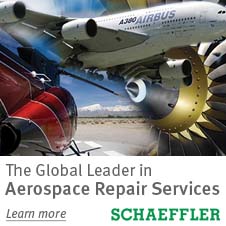ARSA Contributes at EASA ICA Workshop
On Jan. 19, 2010 the European Aviation Safety Agency (EASA) hosted an “Instructions for Continued Airworthiness (ICA) Workshop” at the Agency’s headquarters in Cologne, Germany.
In addition to industry representation, the Federal Aviation Administration (FAA), Transport Canada (TCCA) and other National Aviation Authorities (NAA) were in attendance. In that regard, EASA will attempt to “harmonize as far as possible [the ICA requirements] with relevant FAA and TCCA rules, orders and guidance.” Due to the intense interest in ICAs, all 133 seats in the meeting room were occupied and approximately 50 people were turned away due to space constraints according to EASA.
Attending on behalf of the Aeronautical Repair Station Association (ARSA) was Marshall Filler, managing director and general counsel. ARSA has continued to emphasize the importance of ICAs for ensuring aviation safety and has frequently communicated with EASA on this subject. The Association commends the Agency for moving forward with what promises to be a lengthy but critically important rulemaking project.
The workshop’s objective was to supplement the efforts of EASA’s MDM.056 rulemaking working group, which is tasked with improving and clarifying ICA requirements. Specifically, EASA sought input from industry representatives on how to establish clear requirements and responsibilities for the production of ICA, including approval and implementation.
The scope of the undertaking by the MDM.056 working group is broad. The workshop in Cologne was a preliminary meeting, and EASA represented that similar events with industry representatives will be held in the future. The Agency is also considering expanding the working group to include independent maintenance providers, component manufacturers and operators.
One of the main points discussed was determining the relationship of component maintenance manuals (CMM) to the ICA. Currently, CMMs (which provide instructions for maintaining a component in the shop) are not required to be included in the ICA; however, Type Certificate (TC) and Supplemental Type Certificate (STC) holders can incorporate them if desired. A disconnect arises because EASA rules require that holders of European Technical Standard Order Authorizations (ETSOA) and repair design approvals must also create maintenance manuals or ICA while component suppliers to TC/STC holders do not. If a decision is made to include CMMs under the ICA umbrella, EASA would have to determine which party would be responsible for preparing them – the TC/STC holder or the manufacturer of the component.
One of the tasks assigned to the MDM.056 working group is clarifying the responsibility of holders/applicants to produce and maintain ICA. According to EASA, “different TC holders have different interpretations of what a complete set of ICA is and to what level they are required to control the data that constitutes the ICA. The consequence is that parts of this data may not be sufficiently controlled by design approval holders and that maintenance organizations may not have all the necessary data to perform the maintenance in the correct way.” The discussions in Cologne provided the working group with input to rectify this divide in the construction of new ICA requirements.
Also discussed was the authorities’ recent emphasis on continued airworthiness and operational safety and the responsibility of design approval holders to provide ongoing support for their products. Critical safety issues such as aging aircraft, damage tolerance of repairs and alterations, electrical wiring interconnection systems (EWIS) and Airworthiness Directives imposing Critical Design Configuration Control Limitations (CDCCL) relating to fuel tank safety are prime examples. These issues were not well understood when aircraft ICAs were originally developed and consequently the authorities have recently taken steps to address them, even to the point of making compliance with fuel pump CMMs mandatory even though there was no regulatory requirement that they be created in the first place.
Finally, the discussion touched on commercial issues associated with original equipment manufacturers (OEM) making ICA “available” to other parties as required by the regulations. Reference was made to how governments have addressed similar issues in other industries. An example cited by Mr. Filler is the manner in which automotive service information is made available to independent service providers under regulations issued by the U.S. Environmental Protection Agency.







